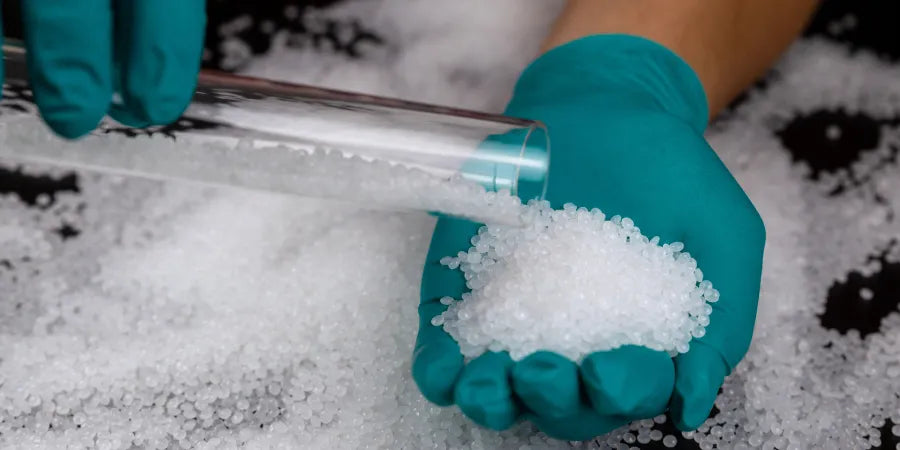Resin Vs Polymer: What Is the Difference Between Resin and Polymer
Resin and Polymer are frequently used interchangeably, yet they possess clear distinctions. We will talk about these differences as they are vital for manufacturing, construction, or arts and crafts professionals. Suppose you're keen on expanding your knowledge of resin and Polymer. In that case, we recommend enrolling in a resin art course, where you can gain practical experience and further insights into working with these substances. Discover the true disparities between resin and Polymer and enhance your expertise in using them effectively and creatively. This blog post delves into the dissimilarities between resin and Polymer, providing a comprehensive understanding of these materials.
5 Major Differences: Resin Vs Polymer
When distinguishing between resin and Polymer, several key points must be considered. Firstly, resin is a solid or highly viscous substance derived from plants, trees, or synthetic sources. On the other hand, a Polymer is a broader term encompassing a wide range of materials made up of repeating units - they can be organic or synthetic. They come with many more differences, including the following:
-
Composition
As mentioned earlier, resin can be derived from plants or synthesised chemically. It consists of long-chain molecules with a thermosetting or thermoplastic structure. This kind of resin cures permanently when heated, becoming rigid and non-malleable. Examples of thermosetting resins include epoxy and phenolic resins. In contrast, thermoplastic resins can be liquefied and reheated multiple times, retaining their original properties. Polyethylene and polystyrene are examples of thermoplastic resins commonly used in everyday products.
On the other hand, Polymers are macromolecules composed of repeated monomers connected by covalent bonds. These bonds create a chain-like structure responsible for its unique properties. It can be classified as natural or synthetic, with numerous variations within each category. Natural Polymers, such as cellulose and silk, are derived from natural sources and exhibit biocompatibility. Synthetic Polymers, such as polyethylene terephthalate (PET) and polyvinyl chloride (PVC), are artificially produced and possess specific properties tailored to their intended applications.
-
Physical Appearance
Regarding physical appearance, resins usually have a transparent or translucent quality that allows light to pass through. They can come in different colours, such as clear, amber, or coloured, depending on the specific resin used. They also have a glossy finish, which enhances their visual appeal in a wide range of applications.
On the other hand, Polymers can exhibit a wider range of appearances. While some may share resin's transparent or translucent characteristics, others can be opaque, flexible, or semi-crystalline. Its physical properties can be tailored during the manufacturing process to meet specific requirements. This versatility allows it to be used in various products and industries.
-
Applications
Resins, such as Epoxy and Polyurethane, are widely used in various industries like construction, automotive, electronics, and artwork. Epoxy resin is favoured for its exceptional bonding strength and chemical resistance, making it perfect for adhesives, coatings, and casting materials. On the other hand, Polyurethane resin is renowned for its durability and flexibility, making it ideal for coatings, foams, and sealants.
Polymers, on the other hand, exhibit a vast array of properties and have an even wider range of applications. They are indispensable from everyday plastic bottles and packaging materials to high-performance components used in aerospace and medical fields. These versatile materials include natural Polymers like cellulose in textiles, paper, and even food products.
-
Environmental Impact
When considering the environmental impact, resins and Polymers present distinct challenges. Resins, commonly used in coatings and adhesives, can release volatile organic compounds (VOCs) during curing, contributing to air pollution. However, advancements in resin technology have resulted in the development of low-VOC and water-based alternatives, reducing their environmental footprint.
Polymers, on the other hand, particularly those derived from fossil fuels, have gained attention due to their contribution to global plastic pollution. Improper disposal and limited recycling infrastructure have led to significant environmental issues. However, ongoing research and innovation aim to address this concern by focusing on developing sustainable and biodegradable Polymers made from renewable resources.
-
Recycling and Disposal
Resins and Polymers, although related, have noticeable differences in their recycling and disposal methods. Resins, as a specific type of Polymer, have distinct characteristics regarding recycling. For instance, Polyethylene Terephthalate (PET) is highly recyclable and widely used to produce recycled plastic items such as bottles and packaging materials. They have well-established recycling processes and are commonly incorporated into the circular economy. However, others might require specialised recycling methods or end up in landfills if not properly managed.
Similarly, Polymers generally vary in terms of their recyclability and disposal pathways. While some plastics can be easily recycled through existing systems, others may present challenges due to their composition or if they are mixed with other materials. However, the growing development of advanced recycling technologies and increased public awareness drive progress in Polymer waste management. Efforts are being made to improve the recyclability of Polymers and find sustainable solutions for their end-of-life treatment, aiming to minimise their environmental impact and contribute to a more circular economy.
Conclusion
It is crucial to understand the differences between resin and Polymer for manufacturing, construction, and arts and crafts professionals. Resin, derived from plants or produced synthetically, finds extensive applications in various industries. On the other hand, Polymers are large molecules resulting from repeating smaller units, with natural and synthetic variations. Resins have a transparent or translucent appearance with a glossy finish, while Polymers offer a wider range of physical appearances.
Epoxy and Polyurethane resins are favoured for their bonding strength and durability. Polymers exhibit versatility, used in everyday products and high-performance components. Environmental concerns are associated with resins and Polymers, but efforts are being made to develop sustainable solutions. Proper recycling and disposal methods should be followed. To learn about resin vs Polymer, visit Arts Shala's website and Contact Us for more information.












